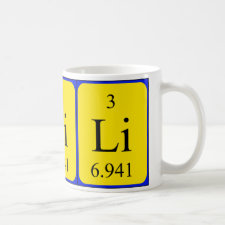
Authors: Huang Y, Wang R
Article Title: Green recovery of lithium from water by a smart imprinted adsorbent with photo-controlled and selective properties.
Publication date: 2019
Journal: Chemical Engineering Journal
Volume: 378
Article Number: 122084.
DOI: 10.1016/j.cej.2019.122084
Alternative URL: https://www.sciencedirect.com/science/article/pii/S1385894719314780
Abstract: Recently, the development of electronic devices and electric vehicles has promoted the demand for lithium resources. To realize green recovery of lithium from water, we designed novel photo-responsive lithium ion imprinted polymers (P-IIPs) based on the surface of mesoporous C3N4 by using the mixture of crown ethers and azobenzene derivatives as functional monomers. The effects of light irradiation, pH, contact time, temperature and initial concentrations on the Li+ adsorption capacity of P-IIPs were investigated in detail. The results show that UV irradiation led to Li+ desorption of P-IIPs, and visible irradiation promoted their adsorption. The experimental data could be well fitted by the Langmuir adsorption isotherm, and the maximum adsorption capacity of 3280.5 μmol/g was reached at solutions of 400 mg/L under visible irradiation. The equilibrium adsorption was achieved after 30 min under visible irradiation that was shorter than in darkness. The kinetic data can be well explained by pseudo-second-order kinetic model. In the presence of Na+, K+ and Mg2+, P-IIPs exhibited ideal selectivity and adsorption properties for Li+. In addition, the saturated P-IIPs with Li+ could be regenerated with UV light. Therefore, the present research provides a green and feasible strategy for the recovery of lithium resources
Template and target information: lithium ion, Li(I)
Author keywords: Azobenzene, crown ether, Lithium, Mesoporous C3N4, selectivity, surface imprinting



Join the Society for Molecular Imprinting

New items RSS feed
Sign-up for e-mail updates:
Choose between receiving an occasional newsletter or more frequent e-mail alerts.
Click here to go to the sign-up page.
Is your name elemental or peptidic? Enter your name and find out by clicking either of the buttons below!
Other products you may like:
 MIPdatabase
MIPdatabase









